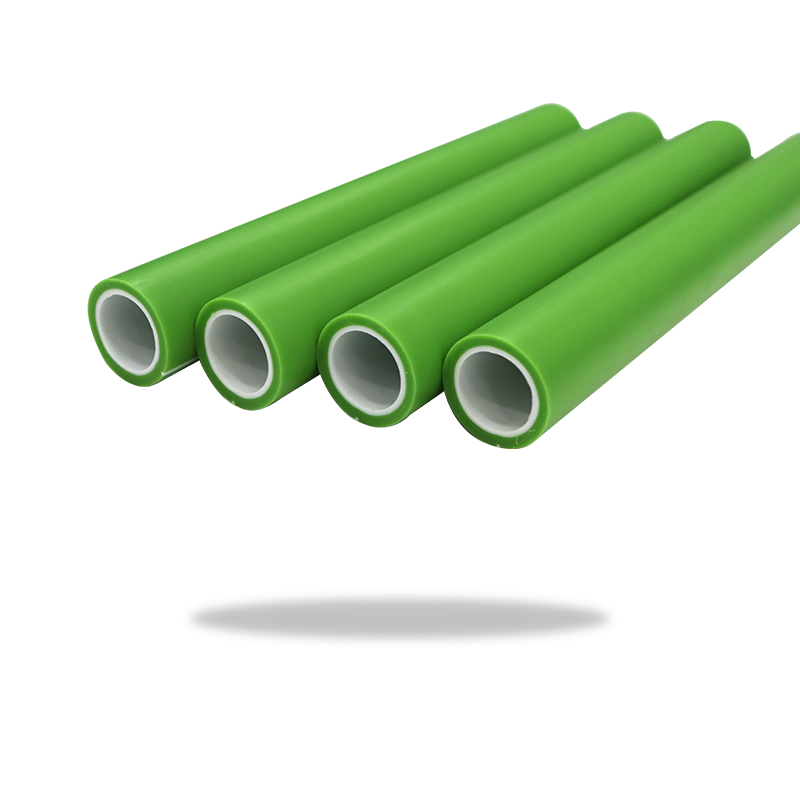During the installation of PPR Antibacterial Pipe, there are indeed some special protective measures that need to be taken, especially considering its antibacterial properties, the structural strength of the pipe, and the long-term interaction between the pipe and the water flow. Here are some key protective measures that should be taken during the installation process:
1. Prevent high temperature damage
Avoid overheating: When installing PPR antibacterial pipe, the connection and welding of the pipe need to control the temperature. Excessive temperature may cause the pipe to soften, affecting its antibacterial properties and overall structural strength. Therefore, when performing hot melt connection, the manufacturer's recommended temperature range must be strictly followed.
Temperature control of welding tools: Use appropriate hot melt welding tools and ensure that the temperature during welding does not exceed the tolerance temperature of the PPR pipe, which should usually be controlled at around 250°C (the specific temperature depends on the thickness of the pipe and the manufacturer's recommendation).
2. Prevent ultraviolet exposure
Avoid sunlight exposure: PPR antibacterial pipe is exposed to the sun for a long time (especially before installation), and ultraviolet rays may cause aging of the outer layer of the pipe or a decrease in the antibacterial effect. Therefore, try to avoid exposing the pipe to the sun for a long time before installation. If it is unavoidable, you can use sunshade cloth or store the pipe in a cool place.
Outer coating protection: Some PPR antibacterial pipes may have an outer protective coating. If used improperly or the coating is damaged, the antibacterial effect may be affected. Avoid unnecessary friction or collision during installation.
3. Avoid pollution
Cleaning inside and outside the pipe: During the installation process, especially after cutting and welding the pipe, ensure that there are no pollutants (such as dust, oil stains, garbage, etc.) inside and outside the pipe. These impurities may not only affect the antibacterial effect of the pipe, but also cause water quality problems. During the installation process, avoid direct contact between the pipe and the ground, and use clean tools for operation.
Prevent contamination of the pipe interface: During the connection process, ensure that the joint part of the pipe (especially the hot-melt connection part) is kept clean to avoid sewage, oil stains, etc. from polluting the water quality in the pipe. Special cleaning tools or cleaning fluids can be used to clean the joint part.
4. Avoid physical damage
Avoid collision and scratches: During the installation process, especially when carrying and cutting the pipe, pay attention to avoid physical damage to the pipe surface (such as scratches, fracturing, etc.). These damages may damage the integrity of the pipe or the antibacterial coating, affecting the service life and antibacterial effect of the pipe.

Use appropriate tools: When installing PPR antibacterial pipes, professional tools should be used for cutting and welding. The sharpness of the cutting tool should be kept good to avoid damage to the cutting edge of the pipe.
5. Correct connection method
Welding strictly according to the instructions: Make sure that the welded joints are not overheated or over-extended to prevent deformation of the pipe interface, changes in pipe wall thickness, or damage to the antibacterial function. When using hot melt connection, the welding time and temperature should be strictly in accordance with the standards provided by the manufacturer.
Ensure that there is no leakage at the joint: The sealing of the joint is very important, especially for antibacterial pipes. If the connection is not appropriate, bacteria or contaminants in the water flow may enter the pipe and destroy the antibacterial function, and may even cause leakage problems.
6. Storage and transportation protection
Transportation protection: When transporting PPR antibacterial pipes, heavy pressure or severe impact should be avoided. It is best to use appropriate packaging materials to prevent the pipe from being deformed or damaged due to physical pressure during transportation.
Storage conditions: When storing PPR antibacterial pipes, avoid long-term exposure to sunlight, and the storage environment should be dry and well ventilated. Too high or too low temperature may affect the physical properties and antibacterial function of the pipe.
7. Pipeline slope and flow
Installation slope requirements: When installing PPR antibacterial pipes, especially pipes used for drainage or sewers, the correct slope (generally 1%~2%) should be ensured to maintain smooth water flow and prevent the accumulation of dirt in the pipe due to poor water flow, thereby affecting the antibacterial effect and pipe life.
Control flow: Excessive water flow pressure or flow rate may cause additional pressure on the pipe, causing damage or affecting the antibacterial effect. Ensure that the pipe design meets the flow requirements to avoid overload operation.
8. Cooling and curing time
Sufficient cooling: The welding points of the PPR antibacterial pipes after installation should have enough time to cool and cure to ensure that the strength and antibacterial function of the joints are not affected. Using the pipe too early may cause the joints to loosen or leak.
During the installation process, special attention should be paid to the following protective measures for PPR antibacterial pipes: control temperature, avoid ultraviolet exposure, keep pipes clean, avoid physical damage, strictly follow welding specifications, ensure joint sealing, prevent pipe contamination, and pay attention to correct storage and transportation methods. Through these protective measures, the performance of PPR antibacterial pipes can be maintained to the greatest extent and ensure their effectiveness in long-term use.

 简体中文
简体中文 English
English русский
русский Español
Español Français
Français عربى
عربى Português
Português












